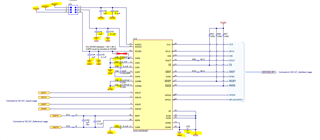Datasheet section 9 describes power supplies and the need for bypass caps between AVDD1 and AVDD2 and AGND. For single-supply operation, AVSS is connected to AGND. However, for dual-supply operation, AVSS is -2.5v but there is no recommendation for a bypass cap. Is a bypass cap recommended for AVSS power supply?
-
Ask a related question
What is a related question?A related question is a question created from another question. When the related question is created, it will be automatically linked to the original question.



